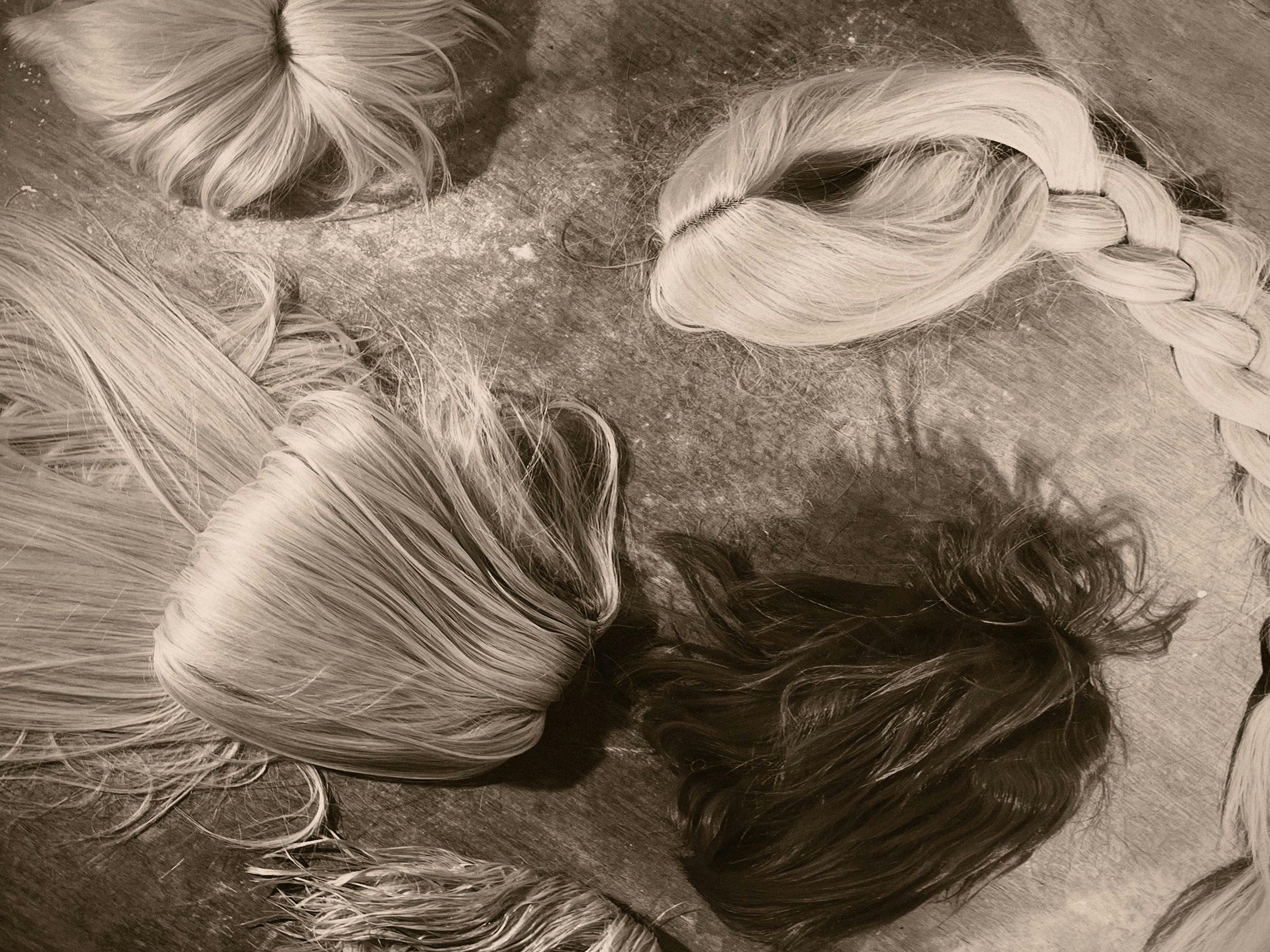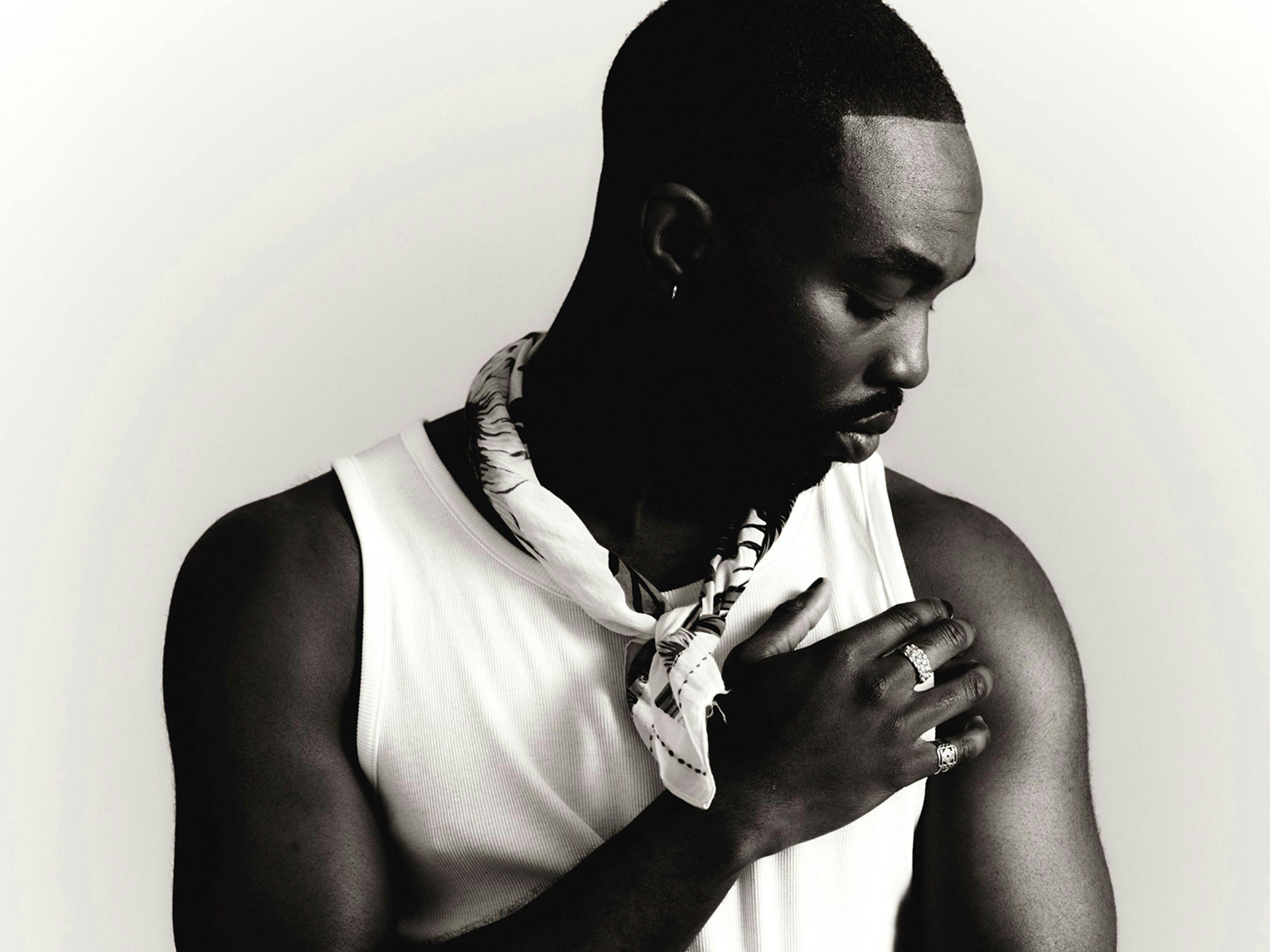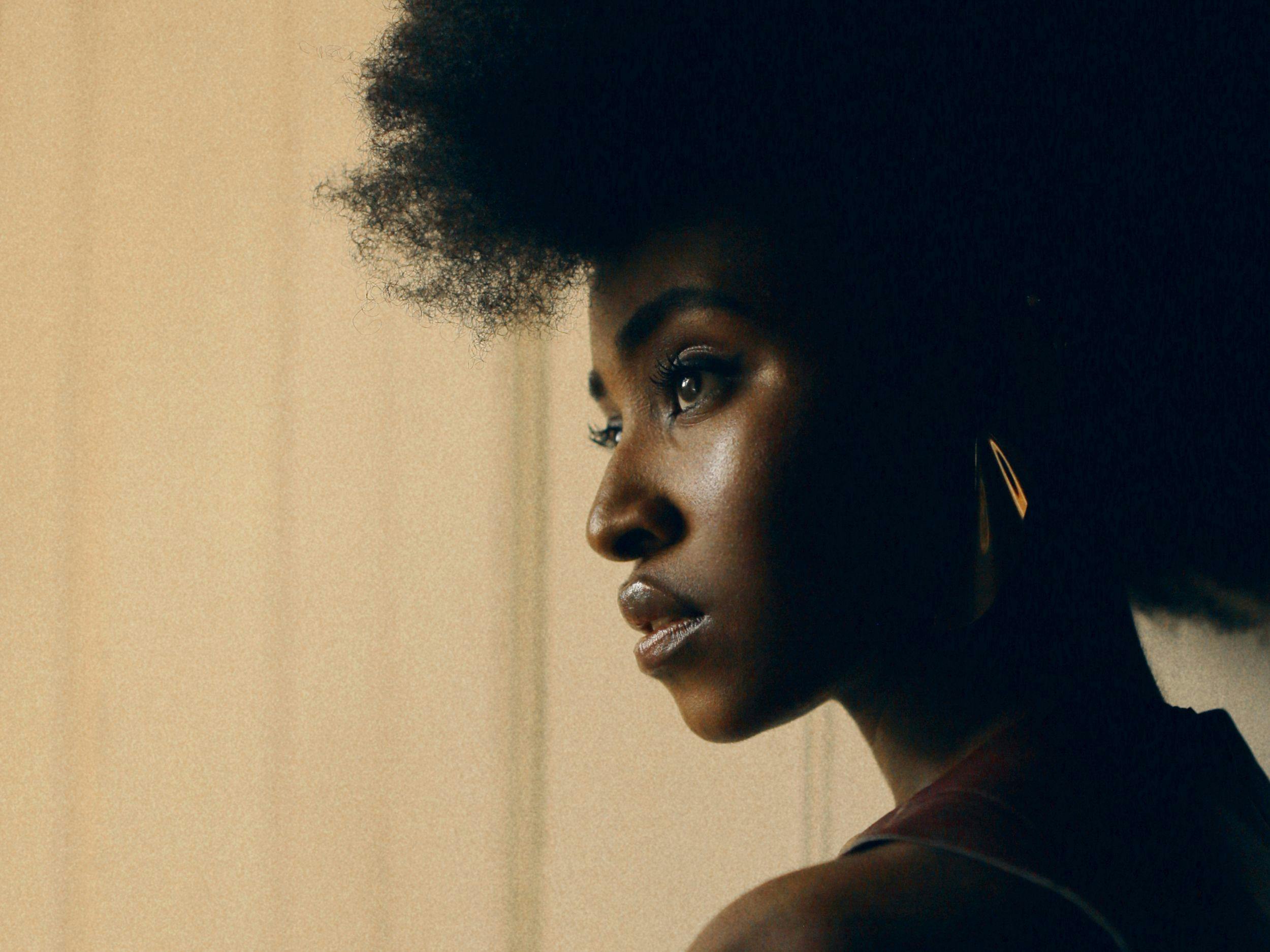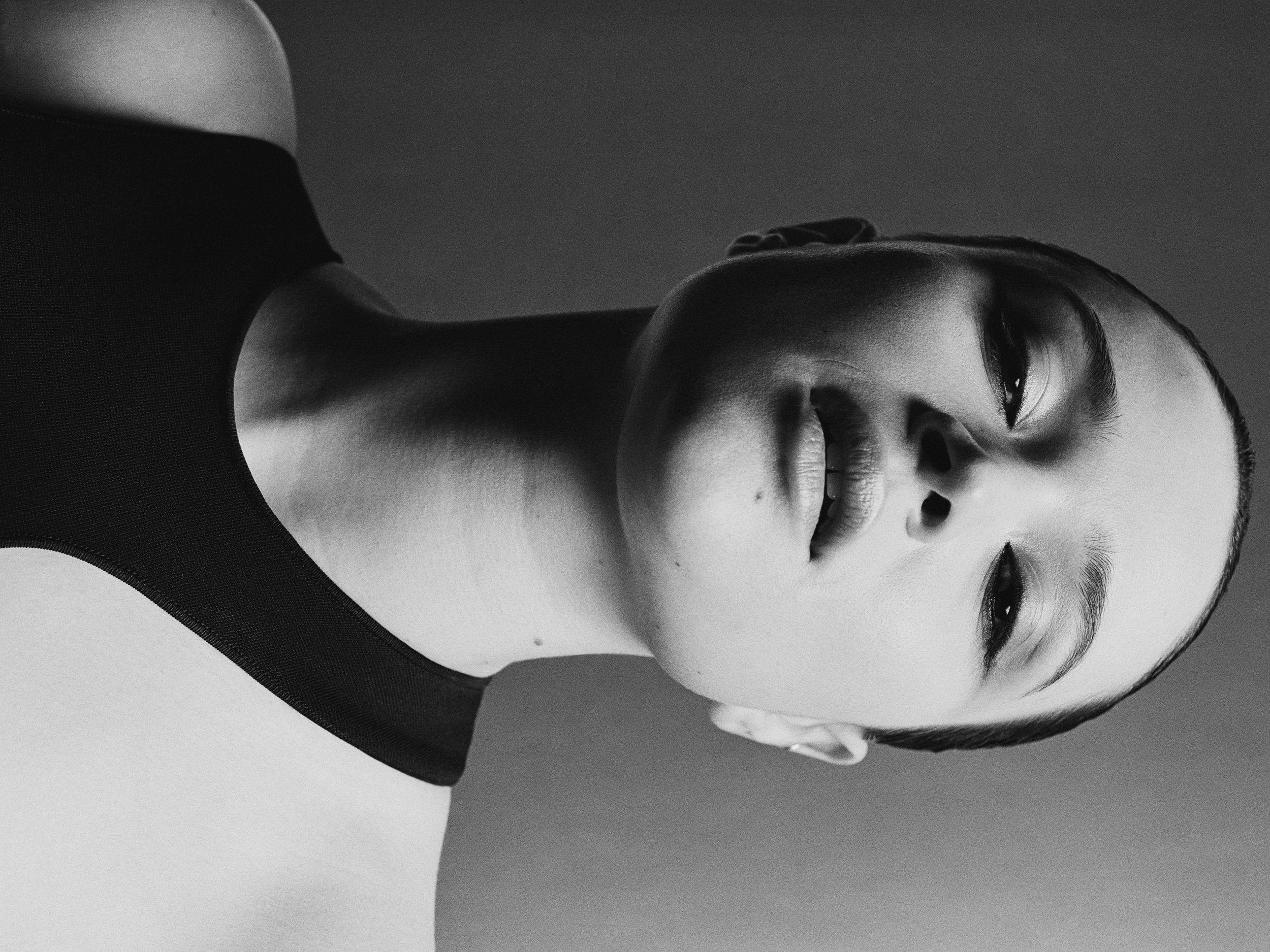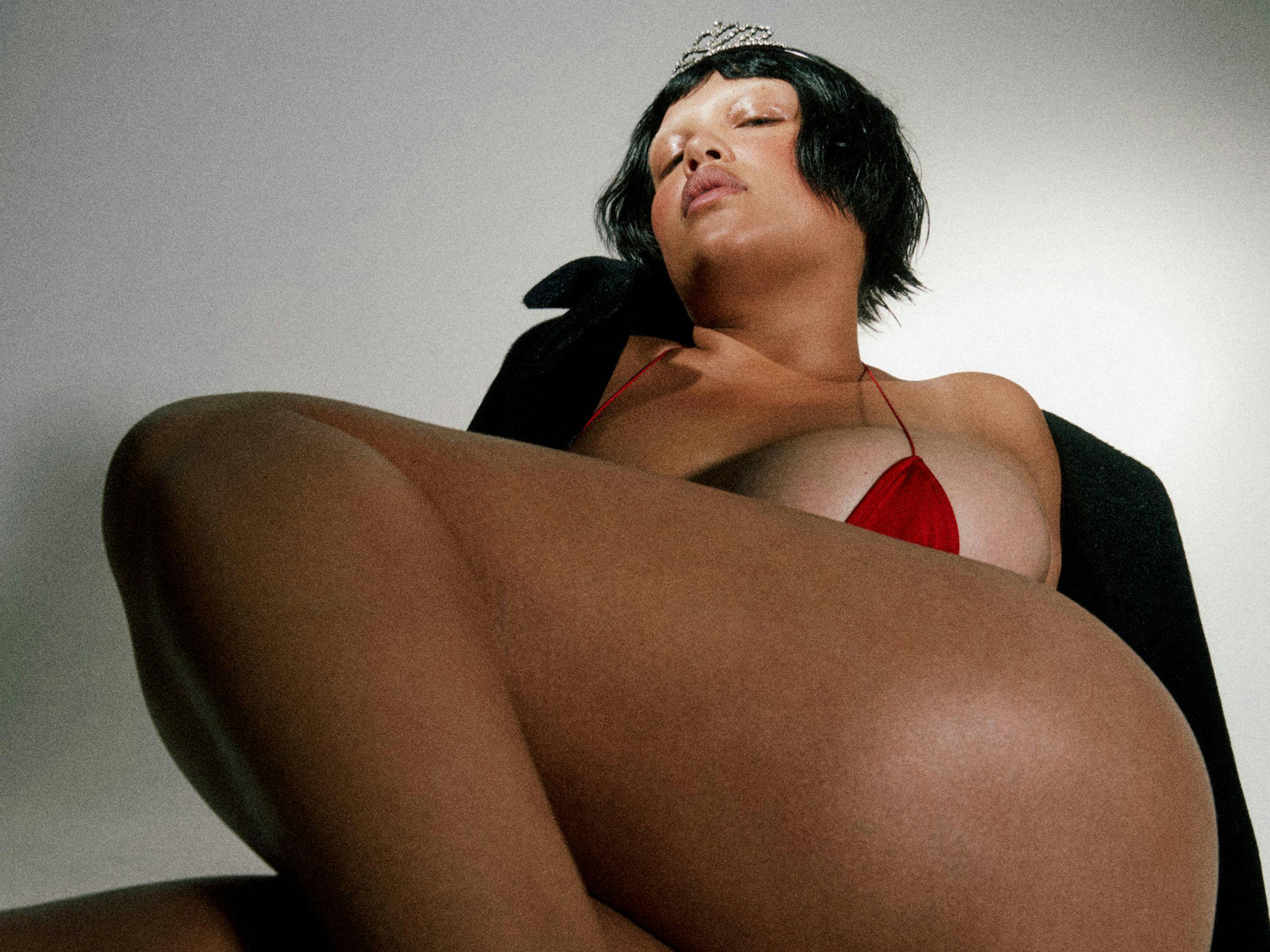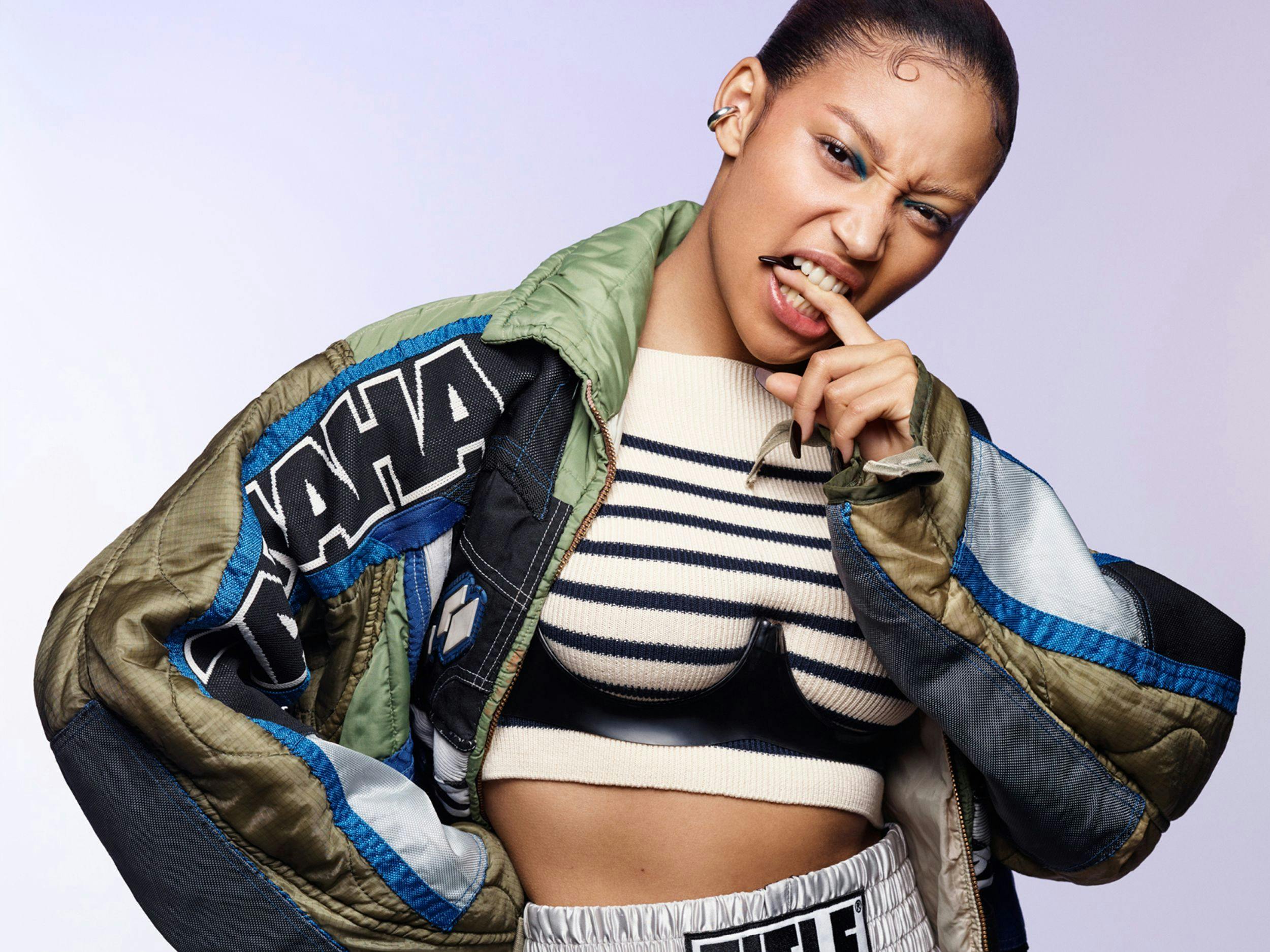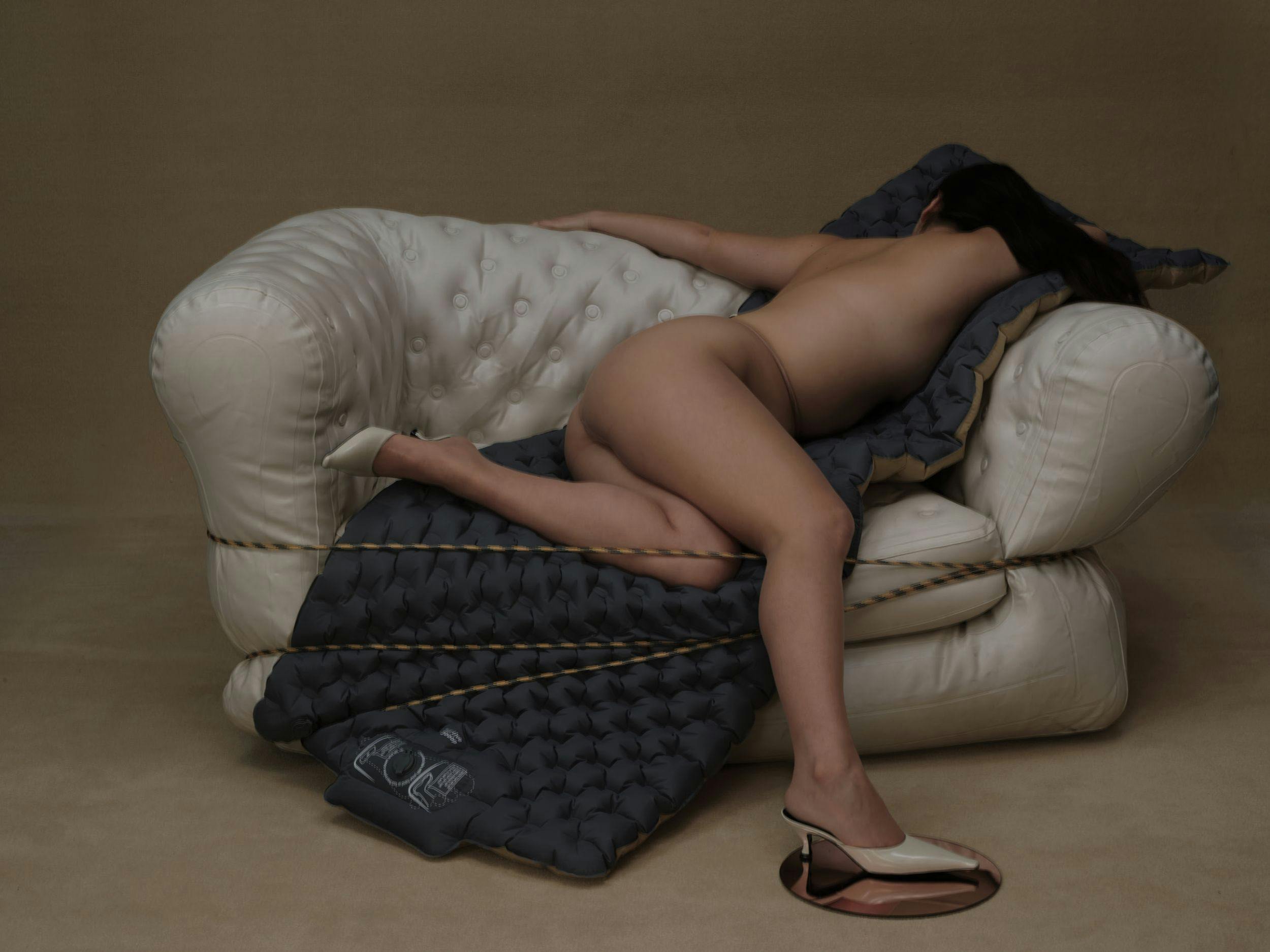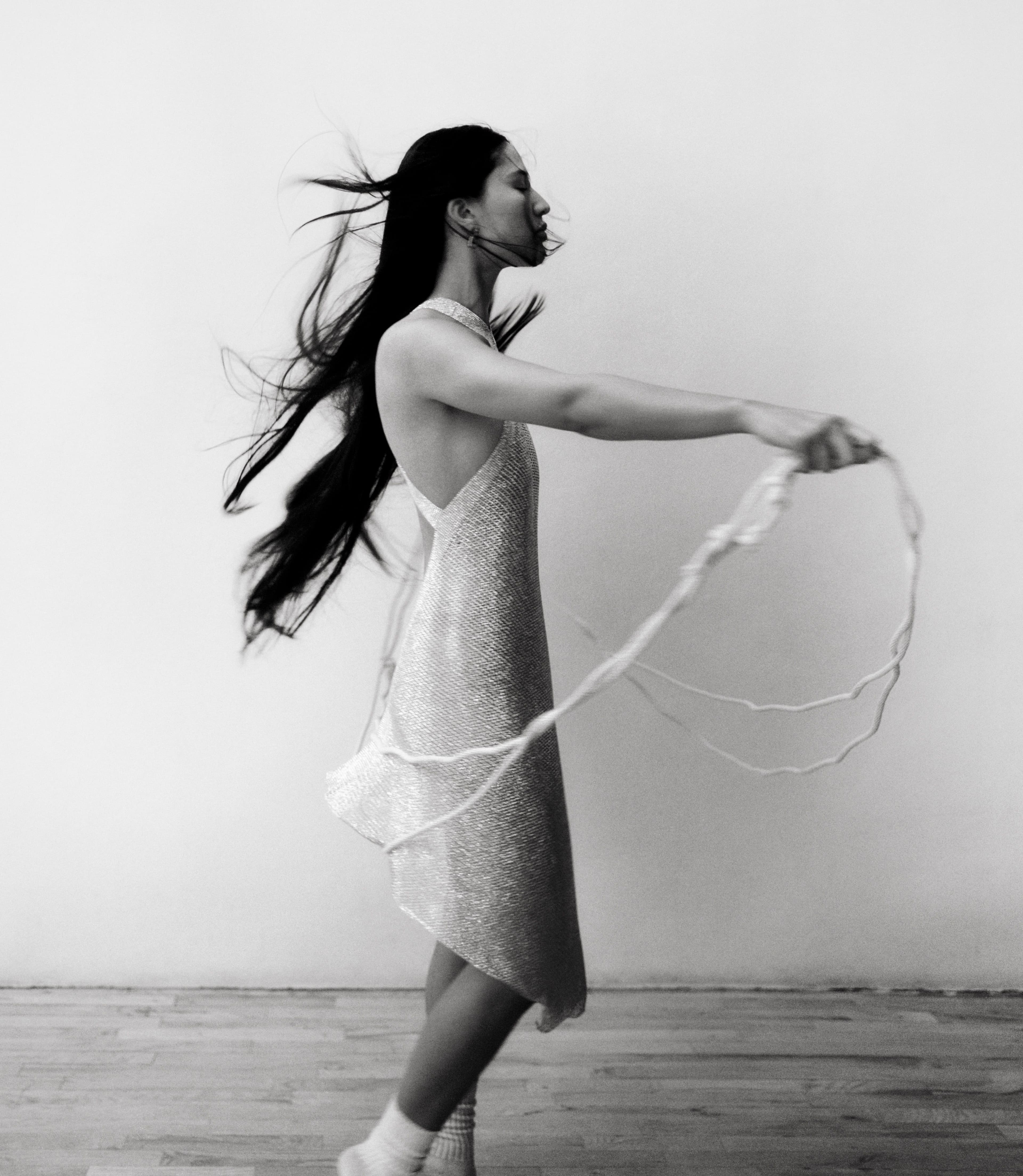
Dress by Ludovic de Saint Sernin. Socks by Calvin Klein. Earrings by Laura Lombardi.
(Bent and Broken) Into a Better Shape
The overlap between photography and choreography is composition, the placement of bodies in a defined space. When a photographer and a choreographer collaborate, as Boe Marion and Jonathan Fahoury did for our latest fashion feature, the result can be a celebration of form and line. With impactful styling by Jess Roberts taking inspiration from New York’s flourishing modern dance scene in the Sixties and Seventies and sculptural set design by Nat Hoffman that nods at the land art movement of the same period, “(Bent and Broken) Into a Better Shape“ reimagines an era of momentous artistic shifts for a similarly revolutionary new age. Fahoury, a freelance performer and choreographer and former dancer at New York City Ballet, spoke with our editor-in-chief about his inspirations and the collaborative process.
Jonathan Shia How did you first get started in dance?
Jonathan Fahoury I started at eight years old with hip hop and from there I started to introduce more styles of dance. Then I was a competitive dancer for about five years until I was fourteen. My goal at the time was to get into a school like Juilliard. I knew I wanted to be a professional so I was like, “What am I lacking in?“ and that was ballet. I was seeking out more ballet training and focusing on that. I transitioned into that side of the dance world and that brought me to the School of American Ballet and then New York City Ballet. It’s not where I had thought I was going to end up, but I’m grateful that I did. It’s brought so many beautiful connections into my life and even though it wasn’t for me in the long run, I’m really grateful for my time there.
JS And you retired earlier this year.
JF I left the company in January of 2023 and since then have been working freelance, still working as a dancer and trying to also build a creative voice to do my own work.

Dresses by Bevza

Bodysuit by Norma Kamali
JS When you talk about building your creative voice, what sort of projects are you looking at working on?
JF I’ve always had an instinct to want to create. I think that exists in many ways for me, one being choreography and movement and building movement from a place that combines form with formlessness, meaning that we have form and we have the ballet behind it but there’s also this human element to it as well and finding my version and my authentic conversation between those two ideas through movement, so definitely choreography. I also have a budding passion for filmmaking and being behind the camera.

From left: Noi Dwol wears all clothing by Norma Kamali. Earrings by Ariana Boussard-Reifel. Johnson wears bodysuit by Norma Kamali. Earrings by Santangelo. Yulu wears bra by Helmut Lang. Vintage skirt by Gareth Pugh from the Albright Fashion Library. Earrings by Britt Bolton. Anklet by Santangelo.

JS I saw those video interviews you made coming out of the pandemic with a bunch of dancers.
JF I had done that for our dancer fund that we had put together. That was a prime example of the beginning of that love for film and finding where dance and film intersect. To me, I think dance on film offers just a whole other dimension to it. To choreograph something with the intent of it being filmed offers even more possibilities. I definitely would love a world where I could go between both and also have projects and jobs that include both. I’m just thinking about collaboration and creativity and being at the center of that creativity within myself, but also with others. Whether that’s with dance, film, fashion, photography, movement direction, I have an interest in doing all of that hopefully. That’s the new dream.

Bodysuit by Maryam Nassir Zadeh. Tights by Falke. Shoes by Capezio. All jewelry by Laura Lombardi.
JS Dance is very much about the movement, so how do you approach something differently when you know the final result is still photographs?
JF What I love about photography, and this can apply for film, is composition. That really has to do with just shapes and the amount of something within a frame. I think it’s also a matter of, with film and photography, just being present in what is coming from the talent and the space you’re in and seeing something and then wanting to just focus in and capture that. I don’t like to come in too prepared because I think the heart of creativity is just being present and having your eyes open and your awareness open. When I would set up a position for the model or the orientation for a set of models, because I do like to also be behind the camera, I think it’s an advantage to being a movement director because I can visualize what that frame would be for the photographer. I like to think about it as if I’m taking the shot myself as well. I think that’s a good approach to movement direction.


Bra by LRS. Skirt by Hyke. Underwear by Cuup. Earrings by Santangelo.
JS What was the process like in terms of the collaboration? As opposed to choreography where you are at most dictated by the music, in this case, there’s a photographer who had things that he wanted to achieve, the stylist had things she wanted to achieve. What is that collaborative process like when you’re working with all those different people on the same team to produce that image?
JF This one was extremely collaborative and I think it wasn’t a matter of like, “Stay in your own lane.“ It was really a matter of asking, “What do you think?“ I did come in and there was a lot of the set design and the styling that was predetermined. I think to have that as a starting point to work off of was actually really helpful. There were a lot of times with Boe and Jess where it was just a matter of, because there was a lot on the mood board, there were a lot of extra clothes, what do we think we should do with the time that we have and what have we already shot and what would complement that? I think it was just feeding off of each other. I would offer a thought to Boe and then he would take that and then add to it and then vice versa. It was very conversational and back and forth. What I appreciated about it was it did really feel like a collaboration that I had the space to also suggest what the model should wear or maybe we take this piece off and vice versa. There was room for conversation with those little details that made it really fulfilling. I think to let the ego aside and just be in the space and listen to others and take in each other’s perspectives is a really cool thing. That day, I just felt like the creative energy in the room was really open-minded and fun and we fed off each other really well.
As a nonprofit arts and culture publication dedicated to educating, inspiring, and uplifting creatives, Cero Magazine depends on your donations to create stories like these. Please support our work here.

All clothing by by Isabel Marant. Shoes by Loeffler Randall. Socks by Falke.

From left: Noi Dwol wears vintage dress by Paco Rabanne from the Albright Fashion Library. Bra by Baserange. Earrings by Santangelo. Bracelet by Laura Lombardi. Johnson wears top by Araks. Bra by Cuup. Earrings by Laura Lombardi.
As a nonprofit arts and culture publication dedicated to educating, inspiring, and uplifting creatives, Cero Magazine depends on your donations to create stories like these. Please support our work here.
